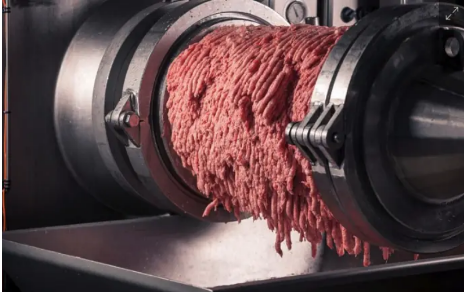代做Air Quality in New York City
Impact of Urban Transportation Networks on Air Quality in New York City
1
Research Proposal: Impact of Urban Transportation Networks
on Air Quality in New York City
1. Introduction:
Background: Urban transportation networks significantly influence air quality in cities. In NewYork City, the extensive public transportation system, including subways, buses, and taxis, contributes to varying levels of air pollution across different areas. Purpose: To analyze how different components of New York City's urban transportation networkaffect air quality in various neighborhoods. 2. Research Hypotheses:
Hypothesis 1: There is a significant correlation between the density of public transportation nodes
(subway stations, bus stops) and the level of air pollutants in surrounding areas. Hypothesis 2: Areas with higher traffic congestion exhibit higher levels of certain air pollutants. 3. Data Sources:
(1)Urban Transportation Data: Data on public transportation networks, traffic patterns, and congestion levels. NYC Open Data: This platform offers a wide range of datasets published by NewYork Cityagencies and other partners, including transportation and environmental data. It can explore
various datasets related to transportation networks, traffic patterns, and more
(https://opendata.cityofnewyork.us/). MTA Open Data Program: Managed by the Data & Analytics team of the MetropolitanTransportation Authority, this program aggregates diverse data sources fromthe MTA, including subway and bus service performance metrics, which can be vital for analysis of
transportation networks (https://new.mta.info/). NYC Transportation Data - CSI Library at CUNY College of Staten Island Library:
This resource provides access to a range of transportation data sources, including MTAsubway and bus ridership statistics, bicycle traffic data, and transportation trends
(https://library.csi.cuny.edu/). Subway Data NYC: A comprehensive dataset of train arrival times for the NewYork Citysubway, updated daily. This dataset includes information on stations and stop times, whichcan be used to analyze the density and frequency of subway services in different areas of the
city (https://transitdata.nyc/). (2)Air Quality Data: Pollution measurements, including particulate matter (PM2.5, PM10), nitrogen dioxide (NO2), and other relevant pollutants. New York City Community Air Survey (NYCCAS): provides detailed information on air
quality across different neighborhoods in the city. It includes data on pollutants like
particulate matter (PM2.5), nitrogen dioxide (NO2), and others. (https://www.nyc.gov/site/doh/data/data-sets/air-quality-nyc-community-air-survey.page)
NYC Environment & Health Data Portal: This portal offers real-time and historical air
quality data for New York City. It includes measurements of PM2.5 and other pollutants, withdata available in various formats such as JSON and CSV. This resource can be particularly
useful for analyzing temporal variations and identifying pollution
Impact of Urban Transportation Networks on Air Quality in New York City
2
hotspots.(https://a816-dohbesp.nyc.gov/IndicatorPublic/key-topics/airquality/realtime/)&(https://a816-doh
besp.nyc.gov/IndicatorPublic/data-explorer/air-quality/?id=92#display=summary)
NYCCAS Methods and Pollutant Maps: This resource provides the methodologies used
for air quality monitoring in NYC. It includes details on how air samples are collected and
how the data is used to build land-use regression models to estimate air pollution levels
across the city.(https://nyccas.cityofnewyork.us/nyccas2022/report/3)
4. Analytical Methods:
Time Series Analysis: Use time series analysis to study the historical trends in air qualitydata and transportation network changes over time in NYC. Implement models to predict
future trends based on these historical data. Dimensionality Reduction (Linear and Kernel PCA): Apply both linear and nonlinear
PCA to reduce the complexity of large datasets related to air quality and transportationnetworks. This will help in identifying the most significant variables affecting air quality. Random Forest (Non-linear model): Utilize random forest models to analyze the complexrelationships between multiple variables, such as traffic density, types of vehicles, and air
pollutant levels. Big Data Analytics Tools (Dask, MapReduce, Multiprocessing): Leverage these tools for
efficient processing and analysis of large datasets, especially useful for handling extensive air
quality and transportation data. Network Analysis (Node Centrality, Routing, Community Detection, NetworkModeling): Analyze the transportation network using network analysis techniques. Identifykey nodes (like major intersections or transit hubs) that significantly impact traffic flowand, consequently, air quality. Bayesian Inference: Apply Bayesian inference methods to estimate the probabilities of
certain air quality outcomes based on different transportation scenarios. This can be
particularly useful in understanding the impact of urban transportation policies. 5、Anticipated Conclusions:
A significant relationship is expected between the density of urban transportation networks
and the levels of air pollutants in New York City. Areas with higher traffic congestion are likely to exhibit elevated levels of air pollutants. 6、Limitations of the Study:
The study may encounter limitations due to potential biases in the urban data sources and the
complex nature of environmental factors in New York City. The primary methodologies, including time series analysis and network analysis, might not
capture all nuances of the urban-environment interaction. 7、Recommendations for Future Research:
Future research should explore comparisons with other major cities to understand the uniqueness
or commonality of NYC’s situation. Investigating the specific impacts of various types of
transportation, on air quality could provide deeper insights.
请加QQ:99515681 邮箱:99515681@qq.com WX:codinghelp






热门文章
福特电动车卖不动?只有一半汽车经纪明年想卖纯电动车
春节将至,河南致信返乡人员:期盼你们返乡创业就业,在外学到的知识带回来,献计献策!
新政落地后首周北京二手房日均成交量上涨11%
独行侠首节44分!兰德尔:欧文定下了基调 我们的防守没存在感
周口城投城市运营丨聚焦城市发展 彰显国企担当
东芝退市折射日企创新困局